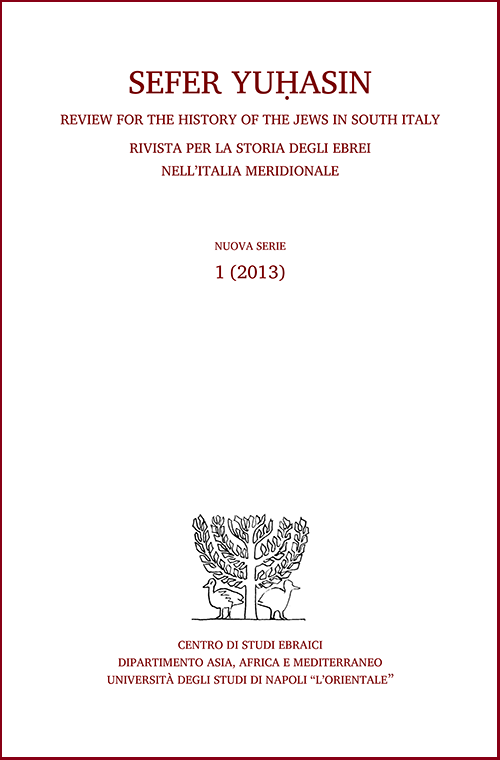Il payṭan Zevadyah
Abstract
Sulla base di una nuova traduzione del piyyuṭ “Yoṣer per lo sposo” di Zavadyah, payṭan altrimenti sconosciuto, in questo articolo vengono fornite alcune indicazioni per provare a contestualizzarne la figura. In base a vari indizi linguistici e tematici, e alla somiglianza con i piyyuṭim di Amittay ben Šefaṭyah di Oria, si può affermare che anche Zevadyah sia stato un payṭan attivo in Italia meridionale. Sembra, inoltre, che l'opera di Zevadyah sia anche stata usata da Amittay come fonte per i propri piyyuṭim. Si suggerisce che Zevadyah sia fiorito a Oria nella prima metà del IX secolo.
The Payṭan Zevadyah
Starting from the translation of a piyyuṭ by Zevadyah, “A Groom’s Yoṣer”, this paper aims to provide some background information about this otherwise unknown payṭan. Linguistic and thematic clues suggest that Zevadyah was a payṭan from southern Italy, because his piyyuṭim show similar features to those by Amittay ben Šefaṭyah. Moreover, it seems that Zevadyah’s work was used by Amittay as a source for his own piyyuṭim. The author then suggests that the former lived in Oria in the first half of the 9th century.
Downloads
Gli autori che pubblicano su questa rivista accettano le seguenti condizioni:
- Gli autori mantengono i diritti sulla loro opera e cedono alla rivista il diritto di prima pubblicazione dell'opera, contemporaneamente licenziata sotto una Licenza Creative Commons - Attribuzione che permette ad altri di condividere l'opera indicando la paternità intellettuale e la prima pubblicazione su questa rivista.
- Gli autori possono aderire ad altri accordi di licenza non esclusiva per la distribuzione della versione dell'opera pubblicata (es. depositarla in un archivio istituzionale o pubblicarla in una monografia), a patto di indicare che la prima pubblicazione è avvenuta su questa rivista.
- Gli autori possono diffondere la loro opera online (es. in repository istituzionali o nel loro sito web) prima e durante il processo di submission, poiché può portare a scambi produttivi e aumentare le citazioni dell'opera pubblicata (Vedi The Effect of Open Access).

